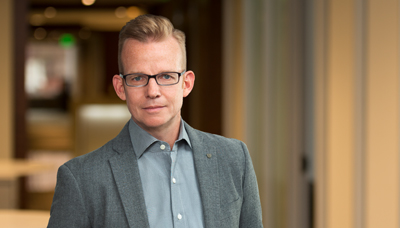 Back in March, AFL-CIO President Richard Trumka summarized his view of the state of union representation in America: “To be blunt, our basic system of workplace representation is failing to meet the needs of America’s workers by every critical measure.” Last week in a Washington Post Op-Ed, this view was echoed by columnist and long-time advocate of big labor’s policies Harold Meyerson. Meyerson identified an “existential problem” facing unions, which are continuing to see membership numbers decline.
Back in March, AFL-CIO President Richard Trumka summarized his view of the state of union representation in America: “To be blunt, our basic system of workplace representation is failing to meet the needs of America’s workers by every critical measure.” Last week in a Washington Post Op-Ed, this view was echoed by columnist and long-time advocate of big labor’s policies Harold Meyerson. Meyerson identified an “existential problem” facing unions, which are continuing to see membership numbers decline.
It is not difficult to understand the concern. Membership decline means one thing for unions: less dues. Measures that weakened public sector unions in
Wisconsin and passage of right to work legislation in traditional union Midwest strongholds of
Indiana and then
Michigan, along with ever-shrinking private sector union membership, have forced labor into a place of critical self-evaluation. And what is emerging from this self-evaluation is a dedication to expanding the scope of union organizing.
In March, Trumka highlighted new targets of organizing that are being explored – non-traditional targets. Trumka noted home care workers, taxi drivers and others who don’t fit neatly into the traditional models of unionization will be targets. The point is: unions are increasingly setting their sights on individuals who “do not neatly fit the legal definition of an employee.” And businesses and employers who before may have not traditionally considered themselves targets for big labor should be paying attention.
Such efforts are not just anecdotal. As
we saw in Michigan with home health care unionization, these non-traditional unionization efforts can have a lot of upside for unions, even if they are not ultimately successful in keeping their representative status. SEIU collected $34 million in dues from more than 59,000 home health care workers in Michigan before it was ultimately forced to end its status as bargaining representative in 2012.
Meyerson also points out the recent one-day strikes of fast-food workers in
New York and
Chicago as evidence of a changing model. Workers in other cities, including St. Louis and then
Detroit this past weekend, have followed suit. Employers will be mindful to pay attention to such trends.
Meyerson explains the AFL-CIO’s plan too. And, it starts with seeking more political power – not necessarily more dues paying members. As Meyerson explains: “The first part of this plan is to expand its Working America program, a door-to-door canvass that has mobilized nonunion members in swing-state working-class neighborhoods to back labor-endorsed candidates in elections in the past decade.” Phase Two, according to Meyerson quoting Trumka, is “we’re asking academics, we’re asking our friends in other movements ‘What do we need to become?’” And Phase Three: “We’ll try a whole bunch of new forms of representation. Some will work; some won’t, but we’ll be opening up the labor movement.”
Where all of this ends up is anyone’s guess – but this is clear: the model of unionization is changing. Change means new challenges. The bottom line for employers: Be Prepared.
 Back in March, AFL-CIO President Richard Trumka summarized his view of the state of union representation in America: “To be blunt, our basic system of workplace representation is failing to meet the needs of America’s workers by every critical measure.” Last week in a Washington Post Op-Ed, this view was echoed by columnist and long-time advocate of big labor’s policies Harold Meyerson. Meyerson identified an “existential problem” facing unions, which are continuing to see membership numbers decline.
Back in March, AFL-CIO President Richard Trumka summarized his view of the state of union representation in America: “To be blunt, our basic system of workplace representation is failing to meet the needs of America’s workers by every critical measure.” Last week in a Washington Post Op-Ed, this view was echoed by columnist and long-time advocate of big labor’s policies Harold Meyerson. Meyerson identified an “existential problem” facing unions, which are continuing to see membership numbers decline. 










/Passle/6488d4630e7e25c9ac9f834a/SearchServiceImages/2024-11-14-13-11-27-495-6735f6fff42d6cc59c8ec5c1.jpg)
/Passle/6488d4630e7e25c9ac9f834a/SearchServiceImages/2024-11-11-22-02-38-042-67327efe31216b909e6ea644.jpg)
